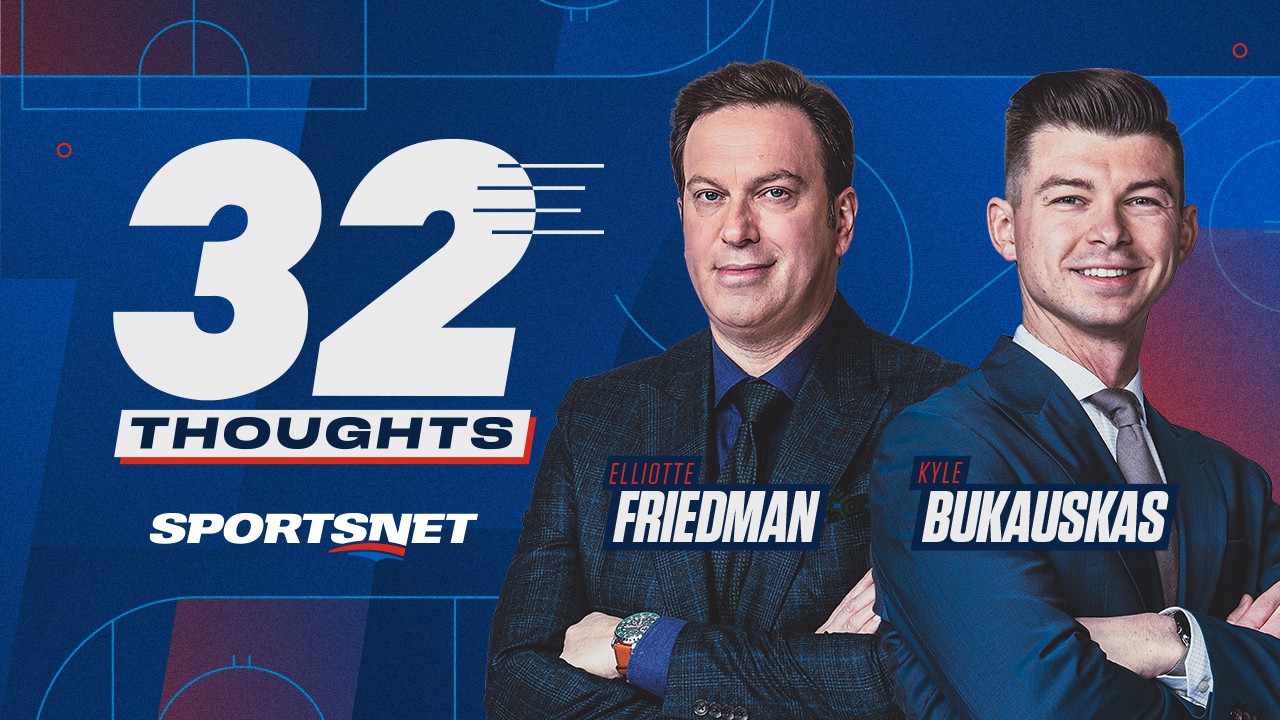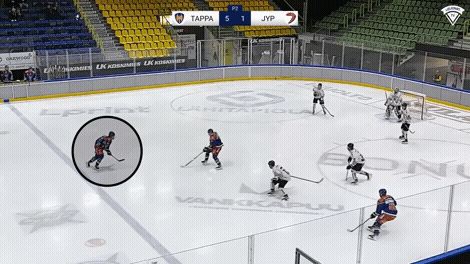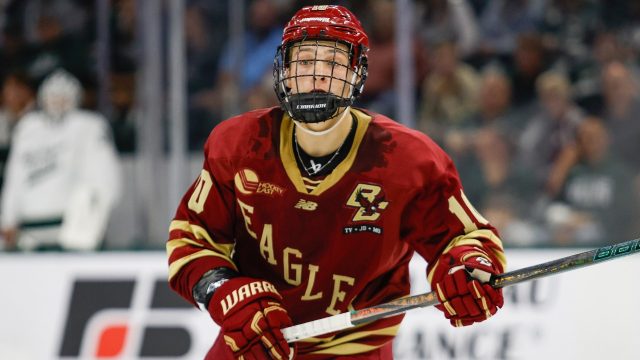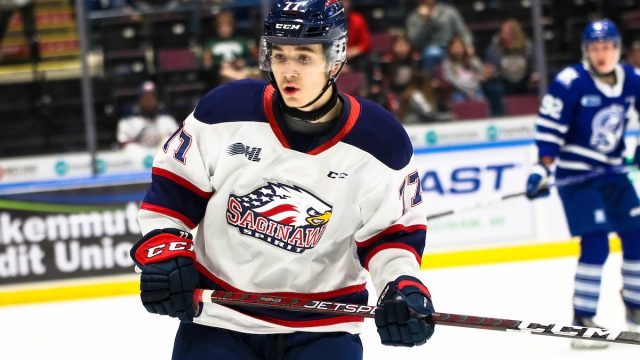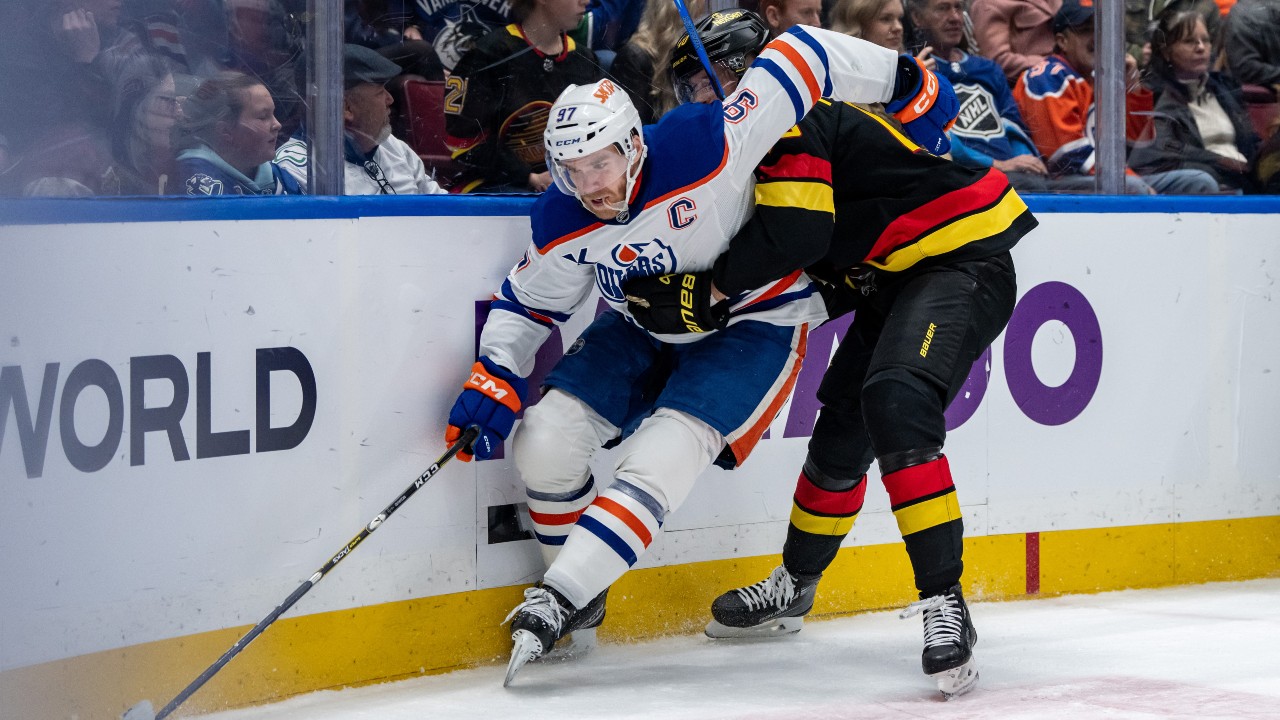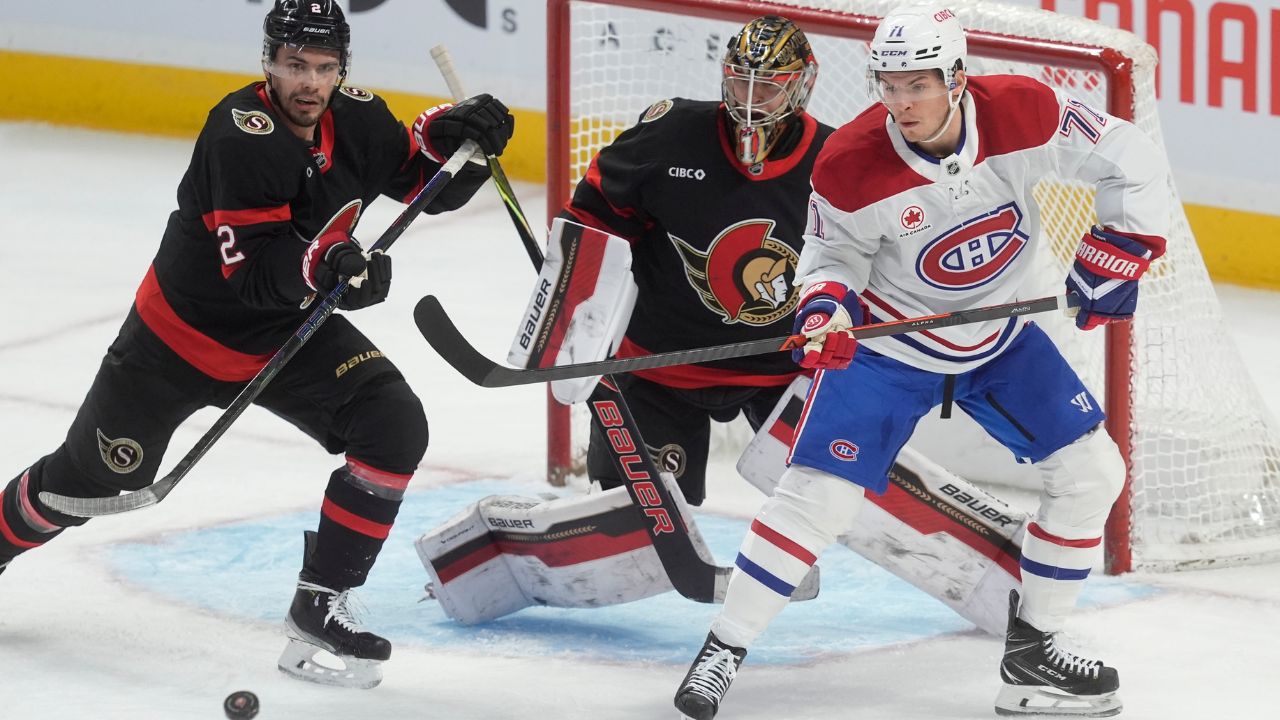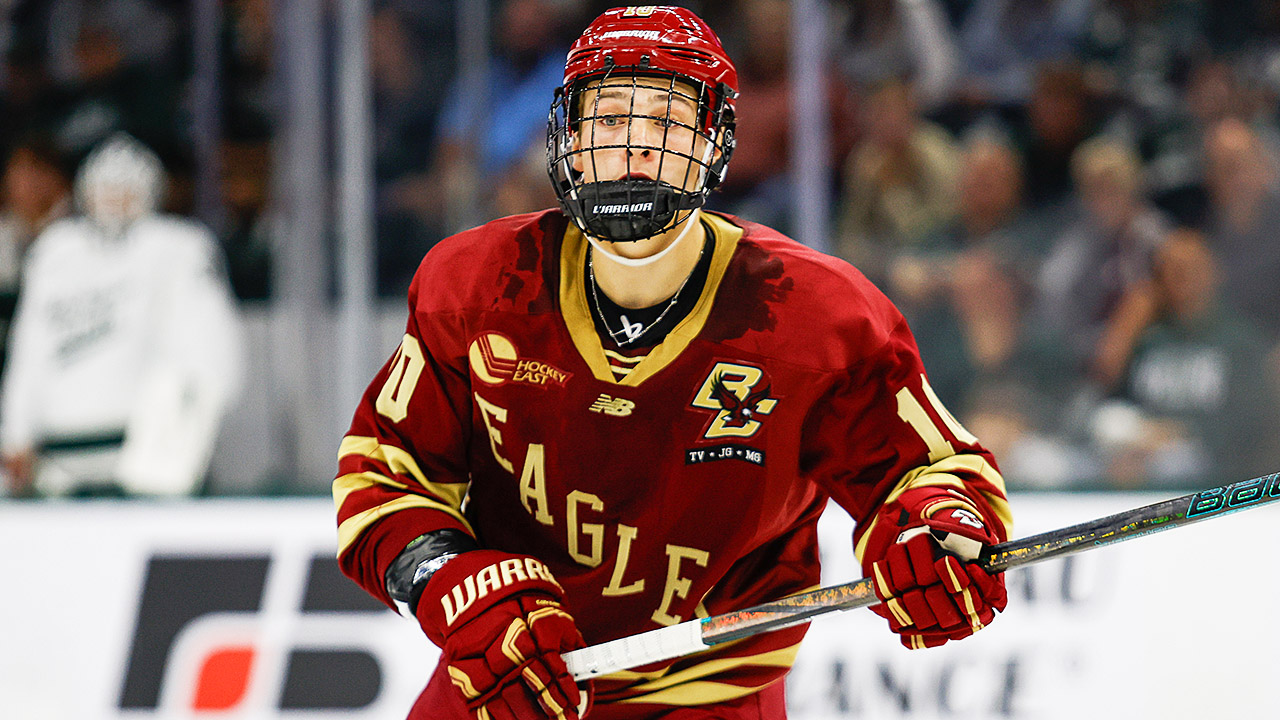
After spending most of my career in the scouting industry I was a creature of habit. I rarely felt comfortable creating draft lists too early in the season because I wanted to have a couple of viewings under my belt before I started slotting and recommending prospects.
But scouting has changed a great deal over the years. The pandemic made it nearly impossible to travel and view live games. Scouting prospects over video became a necessity. The tools available from companies like SportContract and Sportlogic have provided scouts an opportunity to better understand the potential upside of NHL prospects.
However, there will never be a replacement for live scouting. Video is generally limited to following the puck, and play, up and down the ice. In-person viewings provide a more complete assessment of players at every level.
Part of the reason I’m comfortable providing the following draft list early in the season is that, on top of video scouting, I have been fortunate to view most of these players in person. I scouted several of them at the Hlinka/Gretzky tournament in the summer, and some others at the junior ranks in the CHL and USHL.
I say this every year and it’s true again for this crop of prospects: Every draft class has potential for some chaos.
Some years it’s about which Russian players could be targeted early in the draft, and whether or not they will arrive in North America in the short term. Sometimes we wonder if a goalie or two could become worthy of being drafted inside the top 32, or if there is a true competition as to who could be the first player taken overall.
This class has an interesting mix of players. Some are big, others are relatively small. Some are pure snipers and, yes, we even have a couple elite goaltenders.
Here’s a look at my first ranking for the 2025 NHL Draft, an initial list of 32 players that will expand as the season goes on.
No. 1: James Hagens, C, 5-foot-11, 176 pounds, Boston College (NCAA)
Hagens is off to a fantastic start to his freshman season at Boston College. He’s averaging over 19 minutes of ice time per game with most of it coming at even strength and the power play. Hagens did spend some time on the penalty kill this past weekend in BC’s game versus American International, but I don’t see him in that role on a regular basis.
Hagens is already adjusting to the pace of the college game. He’s reading how plays are developing and executing with the puck on his stick. Through his first three games Hagens has produced 1G-3A and he’s a plus-5.
Here’s an impressive clip from the game versus AIC:
What stands out for me is how well Hagens tracks the play that is developing around him. He corrals the puck in the slot, cycles to the top of the zone and takes his time distributing to Dallas Stars prospect Aram Minnetian, who scores from distance.
No. 2: Michael Misa, LW, 6-foot-1, 185 pounds, Saginaw Spirit (OHL)
Misa has impressed me in the early stages of the season. He’s playing centre in Saginaw and taking advantage of the extra freedom in all three zones, using the full width and length of the ice sheet. His 200-foot game is reliable and his speed off the rush is leading to a massive uptick in goal scoring. Misa has produced 15 goals and seven assists in his first 11 games.
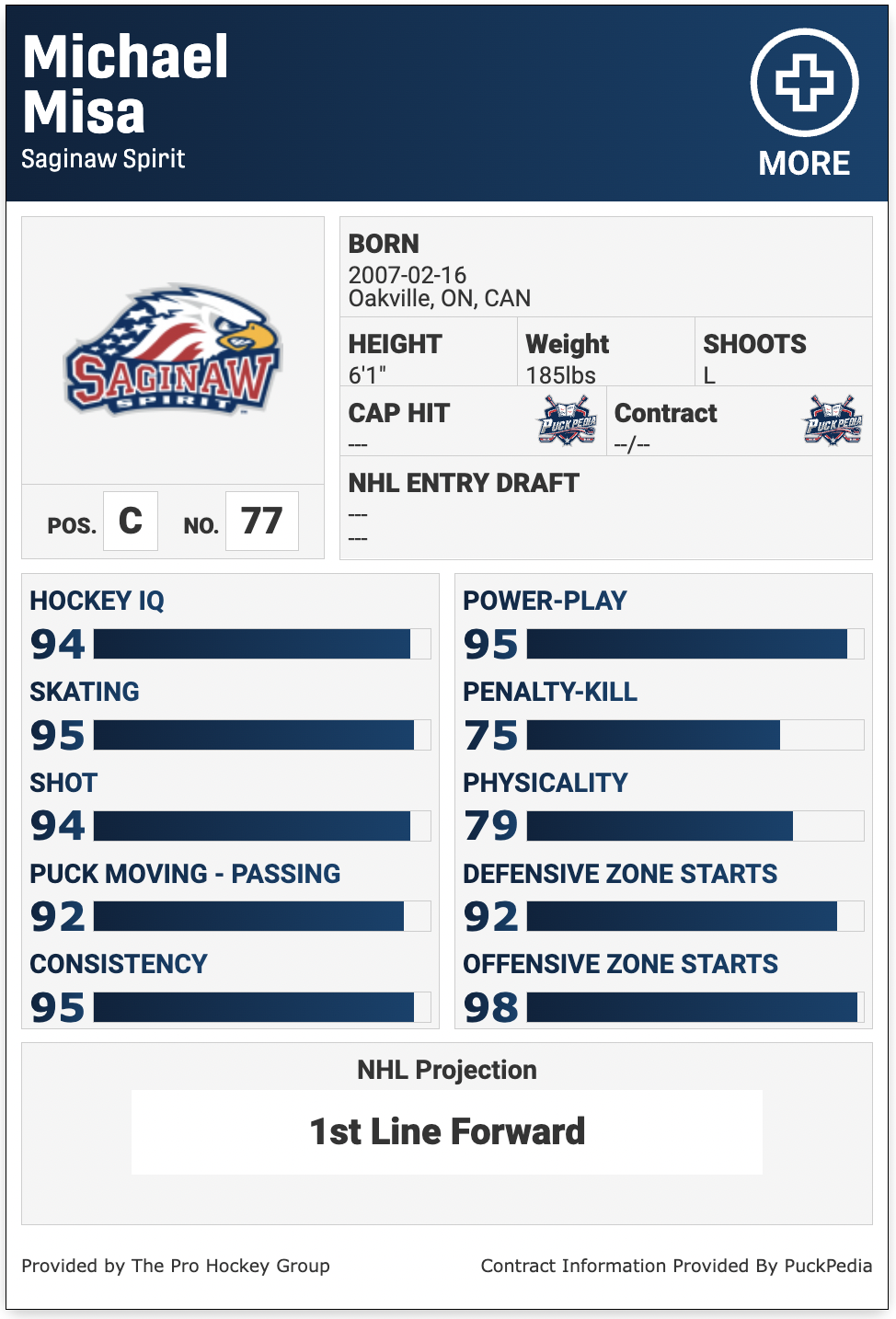
No. 3: Matthew Schaefer, D, 6-foot-1, 175 pounds, Erie Otters (OHL)
Unfortunately for Schaefer and the Otters, he has missed the start of the season battling mononucleosis, but is apparently inching closer to being medically cleared to play. When he does enter Erie’s lineup scouts will be prioritizing Schaefer as a player to closely monitor the rest of the season.
He is a complete player. He was outstanding at the Hlinka/Gretzky tournament in the summer, captaining Team Canada to a gold medal. Schaefer logged over 25 minutes per game and was deployed in all situations. He’s a two-way/transitional defenceman who has top pairing upside at the NHL level.
No. 4: Porter Martone, C, 6-foot-3, 196 pounds, Brampton Steelheads (OHL)
Martone is captaining the Steelheads this season and playing to his identity. He’s already produced 10G-10A in only nine games played. Martone requires very little time and space to rip pucks on net. He leans shooter more than distributor, in my opinion, and he’s exceptionally difficult to defend in the trenches.
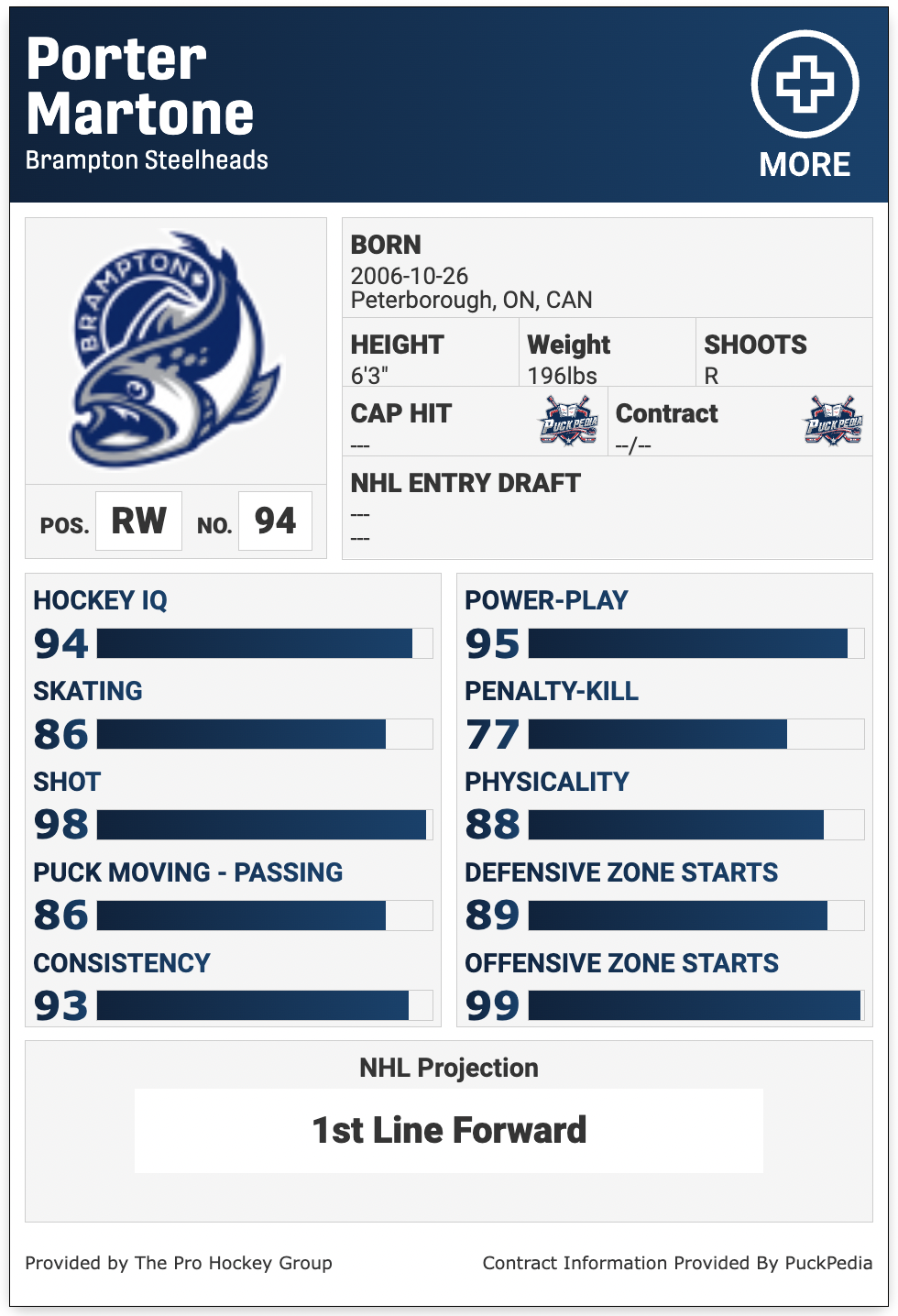
No. 5: Anton Frondell, C, 6-feet, 196 pounds, Djurgardens (Allsvenskan)
I’m expecting Frondell to suit up for Sweden at the world juniors in Ottawa over the Christmas holidays. He’s splitting time between Djurgardens’ J20 and pro team in Sweden’s second division, the Allsvenskan. Frondell loves to shoot the puck and is at his best ripping it on net from the weak side on the power play.
No. 6: Roger McQueen, C, 6-foot-5, 190 pounds, Brandon Wheat Kings (WHL)
McQueen is currently out with an injury and it’s not clear when he will return to the Wheat Kings’ lineup. He was off to a nice start to the season, though, producing 8G-3A in his first eight games. He’s a massive forward who shoots the puck with authority and is extremely difficult to defend around the crease. More impressive for me is McQueen’s skating stride, especially on straight lines. He’s very efficient for his size.
No. 7: Ivan Ryabkin, C, 6-feet, 170 pounds, Dynamo Moscow (MHL)
Ryabkin will be monitored very closely this season and there’s speculation he will be joining the Muskegon Lumberjacks in the USHL. His season got off to an uneven start. Ryabkin has been playing in the Russian junior league, the MHL, where he scored 58 points in 44 games last season. However, he’s only registered eight assists in his first nine games this season.
Ryabkin’s best shifts are, hopefully, still to come. His combination of skill and will are attractive attributes that create scoring chances for himself and his linemates.
Here’s a sample of what Ryabkin can provide in the offensive zone. He works off the half wall, retrieves the puck, and attracts two defenders before sliding a pass through an open seam. He then heads to the net looking for a tip or rebound.
No. 8: Victor Eklund, LW, 5-foot-11, 161 pounds, Djurgardens (Allsvenskan)
Eklund is light. He will need to add more strength and weight as he matures, but he’s a quick strike offensive threat who plays a darting style and has a fantastic release. Off the rush, Eklund provides deception and has an ability to adjust his shooting angle that leads to goals.
No. 9: William Moore, C, 6-foot-2, 161 pounds, USNTDP (USHL)
Moore is very intriguing. In time I will get more comfortable projecting his offensive upside as either a shooter or playmaker, but for now I describe him as a combination of both. Moore is tall and lean, but he’s added weight and strength in the off-season and finds himself being deployed in all situations with the USNTDP U18 squad. He’s a strong skater and his length extends plays in traffic.
No. 10: Logan Hensler, D, 6-foot-2, 196 pounds, Wisconsin (NCAA)
Hensler is a mobile, right shot defenceman with some understated offensive upside. He’s averaging just over 18 minutes per game at Wisconsin to start his freshman season and is being deployed in all situations. Hensler is an excellent skater and his mobility opens up lanes on the offensive blue line to distribute or direct pucks on net from range. Like most freshmen defenders at the NCAA level he is learning how to settle things down in his zone and take appropriate routes to kill plays on defence.
No. 11: Caleb Desnoyers, C, 6-feet, 178 pounds, Moncton Wildcats (QMJHL)
Through his first seven games Desnoyers has posted 3G-7A and is a plus-7. I appreciate the range in his game. He’s crafty with the puck on his stick and provides above average commitment defensively. Players who provide an ‘A’ game and back it up with a ‘B’ game when they aren’t scoring are attractive prospects to monitor.
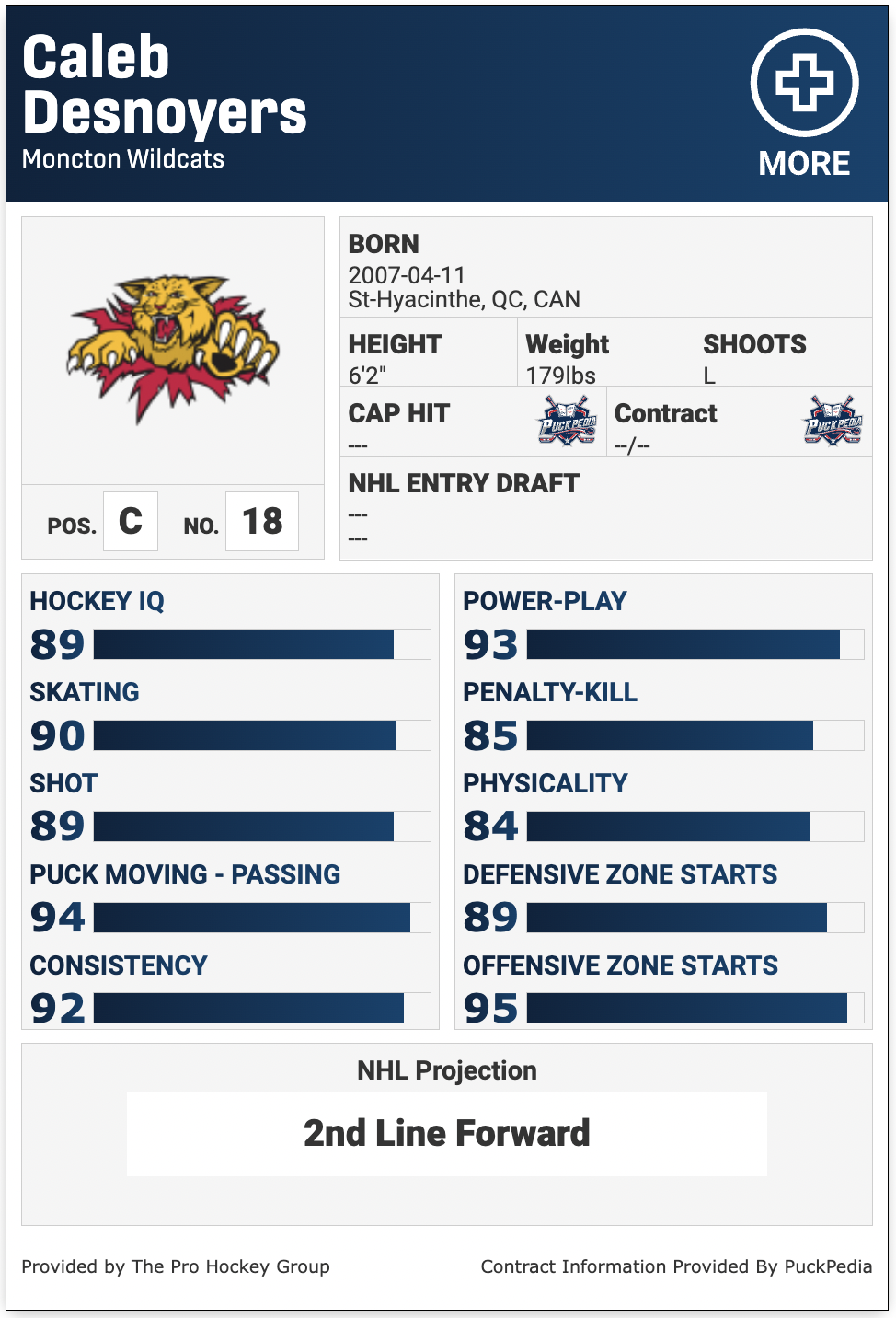
No. 12: Jake O’Brien, C, 6-foot-2, 170 pounds, Brantford Bulldogs (OHL)
O’Brien is coming off an OHL Rookie of the Year campaign last season and he’s flipped the switch early on in this one. Last year he was counted on for more of a playmaking/distributor role and shooter on the power play. So far this season he is scoring more goals than assists, posting 5G-2A in his first nine games. I appreciate his vision and awareness. He reads how plays are developing and pounces on his opportunities. His defensive game ranges at times.
No. 13: Malcolm Spence, LW, 6-foot-2, 201 pounds, Erie Otters (OHL)
When Spence is at his best, he plays fast, creates turnovers, pursues opponents and cashes in on his offensive looks with high end compete. He has the skill set to be used in a variety of roles and the weight and strength to push back physically.

No. 14: Radim Mrtka, D, 6-foot-6, 200 pounds, Trinec (Extraliiga)
Mrtka is a giant. The right-shot defenceman is deployed in all situations when playing with his age group in league play and internationally. He’s a capable distributor who’s agile enough to open up space with his skating. His stature and length are obvious assets defensively.
No. 15: Cole Reschny, LW, 5-foot-9, 161 pounds, Victoria Royals (WHL)
Reschny is taller and stronger than he was last season and that increase in strength will further assist his style of play. Reschny is always in motion. He tracks how plays are developing and reacts accordingly in all three zones. He has solid leverage along the boards and is a very strong skater. Reschny provides a combination of goal scoring and playmaking. Pucks are on and off his stick in a hurry.
No. 16: Charlie Trethewey, D, 6-foot-1, 190 pounds, USNTDP (USHL)
Trethewey has the hockey sense and skating ability to be deployed in all situations. However, he isn’t going to provide high-end offence or quarterback a power play at the NHL level. The two-way defenceman manages the game efficiently and is reliable. Trethewey complements a more active defence partner and matches up well to shut down top-six forwards.
No. 17: Jackson Smith, D, 6-foot-3, 190 pounds, Tri-City Americans (WHL)
Smith is a player who could rise in my rankings as the season progresses. His offensive contribution is on the rise (1G-7A in his first nine games) and his defensive detail has improved. He’s big, strong, physically engaged and doesn’t give away any free ice in his own zone. Smith has a presence about him. I appreciate his approach and compete.
No. 18: Braeden Cootes, C, 6-feet, 183 pounds, Seattle Thunderbirds (WHL)
Cootes is a rash to play against and always seems to be around the play. He’s another prospect who provides a combination of “skill and will.” He’s a relentless competitor who never passes up an opportunity to finish his check, which leads to turnovers and scoring chances for his group.
No. 19: Kashawn Aitcheson, D, 6-foot-1, 198 pounds, Barrie Colts (OHL)
Aitcheson is a two-way defenceman who might provide some depth offence at the pro level. He’s plenty strong, moves well, and is always engaged physically. Aitcheson is being deployed in a variety of roles for the Colts and averaging over 22 minutes of ice time per game.
No. 20: Sascha Boumedienne, D, 6-foot-2, 182 pounds, Boston University (NCAA)
So far, Boumedienne is being deployed at even strength and the penalty kill for the Terriers. He’s one of the most agile defencemen in the draft class. His ability to move laterally to kill entries into his zone, or pressure the puck carrier into turnovers, is an attractive asset. His puck play ranges at times, though. In my opinion, he’s at his best when he keeps things simple and uses his speed and compete to his advantage.
No. 21: Blake Fiddler, D, 6-foot-4, 207 pounds, Edmonton Oil Kings (WHL)
Fiddler captained Team USA at the Hlinka/Gretzky Cup in the summer and led by example. He’s a big body defender who has an ability to hit the rush with the puck on his stick and create secondary offence. Defensively he takes away time and space with his stature and length. I like the “growl” Fiddler brings at times as well. He’s at his best when he’s in the face of his opponents and battling.
No. 22: Brady Martin, C, 6-feet, 175 pounds, Sault Ste. Marie Greyhounds (OHL)
Martin plays bigger than his listed size and is another player who leads by example. Martin can be deployed up and down the lineup. He has top-six skill, power, and an approach that creates turnovers. Martin has produced 4G-7A in his first 11 games this season.
No. 23: Joshua Ravensbergen, G, 6-foot-5, 192 pounds, Prince George Cougars (WHL)
Ravensbergen is a big, athletic, butterfly style goalie who catches with his right hand. He has excellent feet and great quickness moving side to side. He’s very competitive. Ravensbergen reads how plays are developing and never quits on a puck. One thing I’m monitoring is how tall he sits when down in his butterfly. Tall goalies lose their size advantage when sitting on the heels of their skates in the butterfly.
No. 24: Adam Benak, C, 5-foot-7, 161 pounds, Youngstown Phantoms (USHL)
Benak is to forward prospects what Lane Hutson (Montreal Canadiens) was to defence prospects in his draft year: He’s fun to watch, crafty, undersized, and a skilled player who always seems to have the puck on his stick. He’s hard to defend. Benak has the puck skill to make plays in a phone booth and leave defenders staring down at their feet looking for it.
Here’s an example of what I’m describing when I say Benak makes plays in small areas:
No. 25: Cameron Schmidt, RW, 5-foot-8, 152 pounds, Vancouver Giants (WHL)
Schmidt isn’t as dynamic as Cole Caufield (Montreal Canadiens) but he could easily be described as “Caufield light.” Schmidt is an intriguing, undersized shooter who has historically scored more goals than assists. He takes advantage of time and space to rip pucks on net. Schmidt isn’t always a threat off the rush with his skating, but he’s plenty quick enough and has an extra gear on occasion. He’s off to a fantastic start with 12G-7A in his first 11 regular season games.
No. 26: Jan Chovan, C, 6-foot-3, 181 pounds, Tappara (J20)
Chovan is an intriguing prospect. The Slovakian is playing for Tappara’s J20 squad in Finland. His combination of size, skill, vision and above average skating ability are attractive attributes. I’d like to see him produce more than the 5G-5A he has so far in his first 15 league games. Chovan did contribute 1G-5A at the Hlinka/Gretzky in August.
Here’s a look at one of Chovan’s best early-season shifts playing for Tappara:
No. 27: Justin Carbonneau, RW, 6-foot-1, 190 pounds, Blainville-Boisbriand Armada (QMJHL)
Carbonneau is another player from the QMJHL who is gaining momentum. He’s a solid skater, especially in straight lines heading north with the puck on his stick, and craves offence. Carbonneau has some cheat in his game defensively, but his skill wins out for me at this stage of his development. He’s produced 7G-9A in his first 11 games this season.
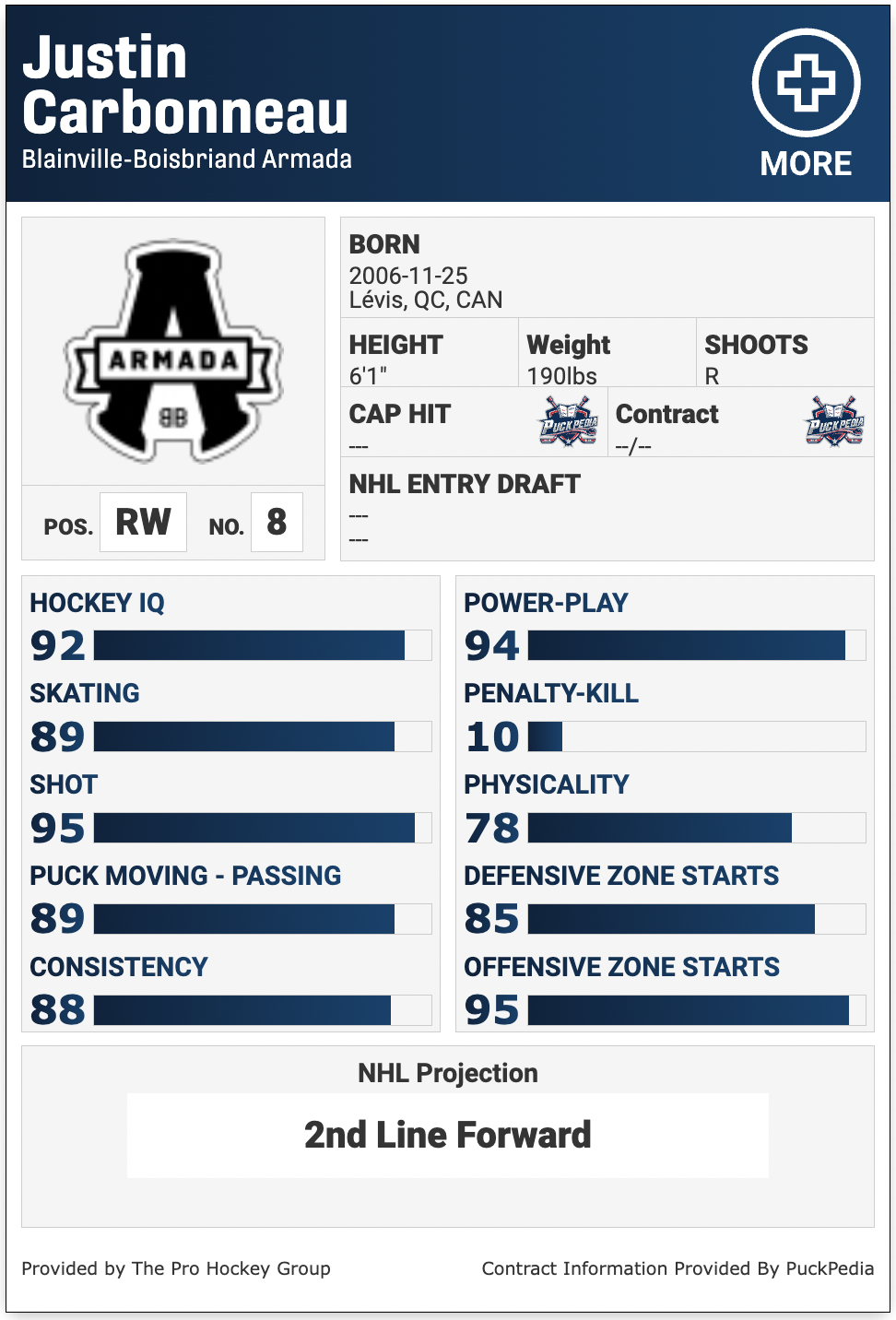
No. 28: Emile Guite, LW, 6-foot-1, 174 pounds, Chicoutimi Sagueneens (QMJHL)
Guite loves to score goals. He’s a bit of an opportunist at times, but there’s no doubt he can finish his chances. Guite is a solid skater with room for more power and strength. His defensive detail can range at times. He definitely has room to be more engaged along the wall and in his zone, but his offensive upside is too strong to overlook at this stage. Guite contributed 25G-32A last season and was part of Team Canada’s Hlinka/Gretzky team in the summer where he contributed 3G-4A in seven games.
No. 29: Milton Gastrin, LW, 6-foot-1, 183 pounds, MODO (J20)
Gastrin scores in streaks. He’s a solid skater who displays an extra gear through the neutral zone and has an ability to make plays from the flank. Gastrin is being deployed in all situations at the J20 level in Sweden. He’s equal parts shooter/distributor and a prospect I’m monitoring closely.
No. 30: Viktor Klingsell, LW, 5-foot-10, 183 pounds, Skelleftea (J20)
Klingsell can be a bit polarizing at times. There’s no doubt he can produce offence. He’s built like a fire hydrant and programmed to make plays from the flank on the power play. He is equal parts shooter and playmaker. Defensively his commitment ranges wildly. Klingsell produced 4G-8A in only five games at the Hlinka/Gretzky tournament, and though he’s averaging a point per game in Sweden’s J20 league, he’s also minus-8.
No. 31: Reese Hamilton, D, 6-feet, 172 pounds, Calgary Hitmen (WHL)
Hamilton impressed me at the Hlinka/Gretzky. He’s not a dynamic offensive defenceman, but he’s an excellent skater and very efficient distributor. Hamilton, in my opinion, is a new breed of NHL style prospect. He arrives ahead of opponents and moves pucks up ice quickly. I do believe there’s some understated offensive upside in his game on the horizon as well.
No. 32: Jack Ivankovic, G, 6-feet, 179 pounds, Brampton Steelheads (OHL)
The conversation will come down to size when Ivankovic is in the final stages of evaluation. But similar to Dustin Wolf (Calgary Flames), Ivankovic stops the puck and that’s all that really matters. He has fantastic feet. His lateral push is on time and he tracks from side to side quickly. Additionally, Ivankovic has a great glove. He relies on his athletic ability, compete and reflexes to be a difference maker.




